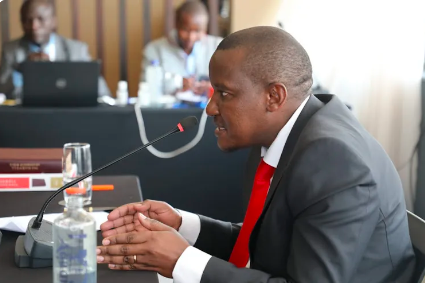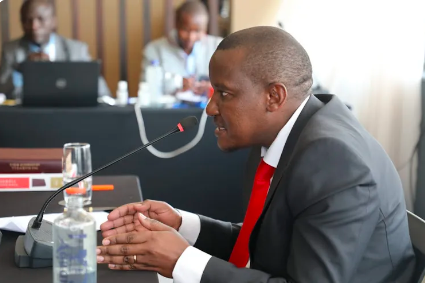
PS Irrigation Ephantus Kimotho
Kenya’s ambitious multi-billion-shilling High Grand Falls Dam Project, a flagship endeavor conceived a decade ago, is now gaining momentum following the formal signing of the first agreement with a reputable British construction firm awarded the contract.
The Project Development Agreement (PDA), inked between the National Irrigation Authority (NIA) and the GBM Engineering Consortium, paves the way for the British contractor to set up operations in the project’s designated areas in Kitui and Tharaka counties. Key tasks on the horizon include updating earlier feasibility studies and ground mapping.
As outlined in the PDA agreement, the contractor has been granted a six-month window to finalize ground mapping and refresh all technical and social data. This process will ascertain the impact on local households and define the scope of work.
Steve Mburu and Michael Short, representing GBM Engineering as Operations Director and Managing Director respectively, signed the agreement on behalf of the contractor. Eng Charles Muasya, Acting Chief Executive Officer of the National Irrigation Authority, represented the government.
The signing ceremony took place at Maji House in Nairobi and was attended by the UK Trade Envoy to Kenya, Theo Clarke, alongside senior government officials including Principal Secretaries Ephantus Kimotho (Irrigation) and Abubakar Hassan Abubakar (Trade and Investment).
The High Grand Falls Dam, a privately initiated Public-Private Partnership (PPP) venture, is slated for construction at the confluence of the Mutonga and Tana Rivers, following the Seven Folks Cascade Project. The main reservoir will span over 165 square kilometers.
Remarkably, the British contractor will not only finance, design, and build the project but also own and operate it for an extended period to recoup costs. In this PPP arrangement, the Kenyan government bears no financial burden.
In terms of scale and estimated cost, at Ksh 425 billion, the dam will stand as Africa’s second-largest freshwater dam after Egypt’s Aswan Dam on the River Nile. It also ranks as the largest single government project, surpassing the Standard Gauge Railway initiative in cost.
Upon completion, the High Grand Falls Dam will provide more than 5,600 million cubic meters of water for irrigating 400,000 hectares of land while generating up to 1,000 megawatts of hydroelectric power.
The project’s multifaceted benefits encompass clean water provision, hydroelectric power generation, flood control, irrigation development, eco-tourism, and aquaculture, with the overarching goal of enhancing the livelihoods of the region and the nation as a whole.
Ephantus Kimotho, the PS for the State Department of Irrigation, urged the contractor to expedite the project’s preparatory phase, with final costs to be determined and negotiated before the main contract signing.
GBM Engineering expressed its commitment to deliver the project within the specified timelines, emphasizing that the hard work had already commenced. They assured the government of their dedication and readiness, with sufficient technical and financial capacity in place.
The British Trade Envoy conveyed the British Prime Minister’s support for the project, underscoring the British government’s commitment to its realization.
The High Grand Falls Dam Project faced significant challenges during the previous administration, with bidding disputes and legal battles nearly causing its collapse. However, the strategic partnership agreement signed between President William Ruto and the UK’s Rishi Sunak paved the way for British investment projects to proceed, effectively resolving the project’s tendering dispute.
This milestone heralds a new era for the High Grand Falls Dam Project, promising remarkable advancements in Kenya’s infrastructure, energy generation, and water supply, while also showcasing the power of international collaboration in addressing pressing developmental challenges.






More Stories
KPLC Customer in Kericho Alleges Bribery Demands, Fictitious Billing, and Lack of Power Restoration
Hon. Seth Steve Okute Launches Campaign for ODM Nomination
Corruption Fuels Unrest in Uganda as Anti-Graft Protests Erupt in Kampala